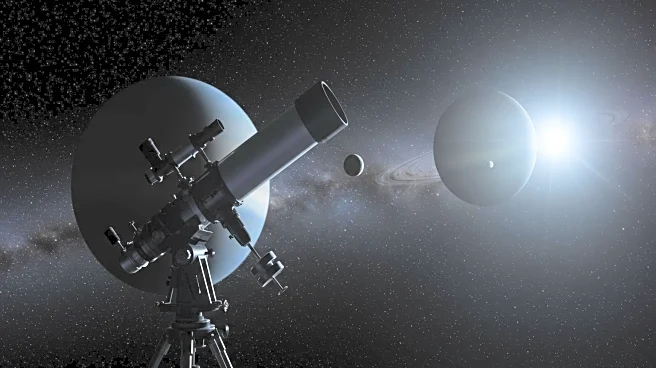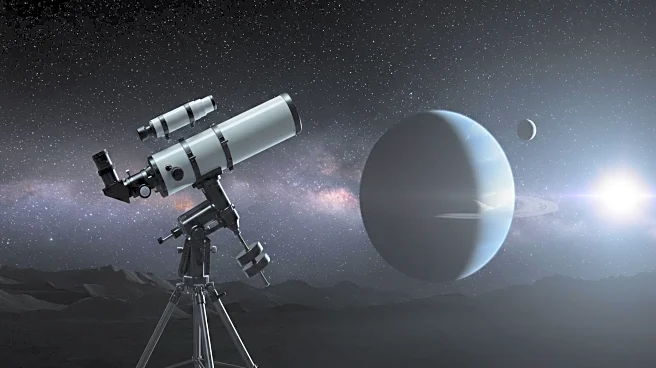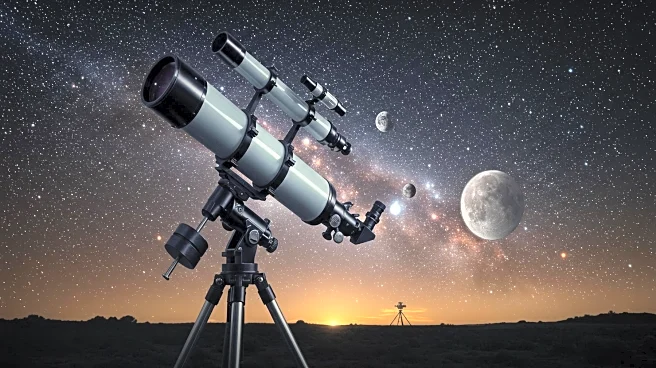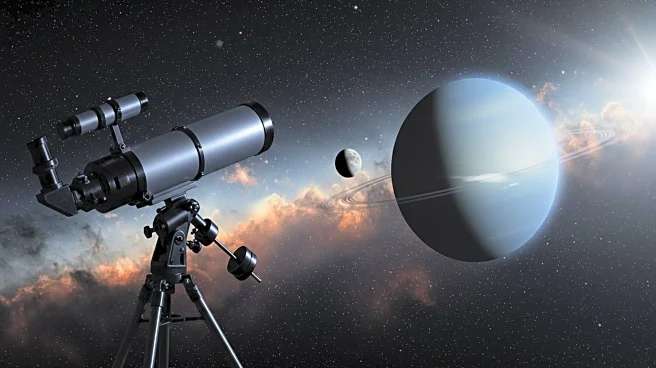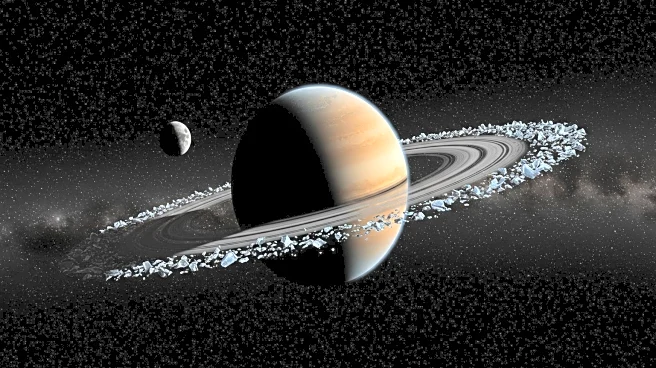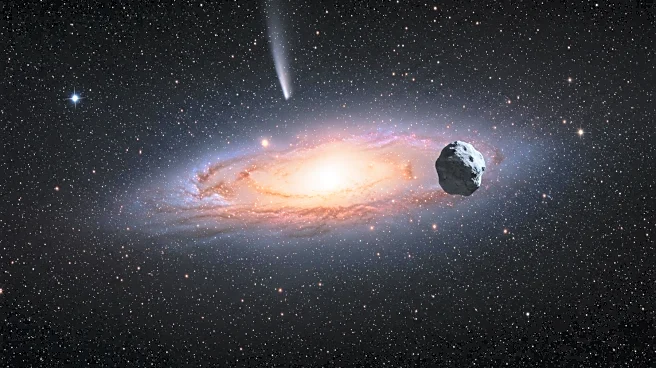What is the story about?
What's Happening?
Astronomers have discovered a previously hidden moon orbiting Uranus, increasing the planet's known moons to 29. The moon, provisionally named S/2025 U1, was first observed by the James Webb Space Telescope (JWST) and is located at the edge of Uranus's inner rings. The moon is small and faint, measuring about 6 miles across, and was not detected by NASA's Voyager 2 probe during its flyby nearly 40 years ago. The discovery suggests that Uranus may host many more undiscovered, tiny moons.
Why It's Important?
The discovery of S/2025 U1 highlights the capabilities of modern astronomy and the potential for uncovering new celestial bodies. Understanding the composition and dynamics of Uranus's moons can provide insights into the planet's history and the formation of its ring system. The finding underscores the importance of advanced telescopes like JWST in expanding our knowledge of the solar system. It also raises the possibility of discovering more moons around Uranus, offering new opportunities for research and exploration.
What's Next?
Further observations and analysis are needed to determine the moon's exact composition and characteristics. Researchers will continue to study Uranus's moons to gain a deeper understanding of their interactions with the planet's rings. The team is also exploring historical archives to find a suitable name for the moon, which may be inspired by Shakespearean characters.
AI Generated Content
Do you find this article useful?



